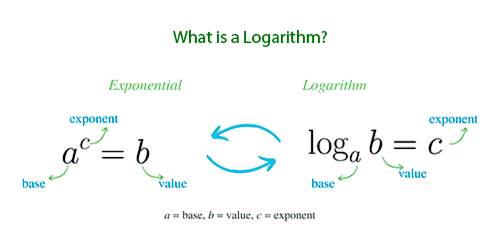Logarithm Calculator
Compute Logarithms for Any Base with Scientific Precision
📋How to Use the Log Calculator?
-
Enter the argument value.
-
Select or enter the logarithm basis.
-
Press calculate and your result will be displayed.
To use this tool, enter the number (argument) you want to analyze and then specify the base. You can choose from common presets like base 10 (common log), base e (natural log), or base 2 (binary log).
Once you click "Calculate", the tool applies the change of base formula to provide an accurate result. Remember that logarithms are only defined for positive numbers, and the base must be a positive number other than 1. This tool is ideal for solving exponential equations and analyzing logarithmic scales.
Useful Tips💡
-
Use "e" as the base for natural logarithm (ln) calculations.
-
Ensure your input number is greater than zero, as logs of zero or negative numbers are undefined in real math.
Mistakes to Avoid ⚠️
- Attempting to use a base of 1 or 0: The base of a logarithm must be positive and not equal to 1.
- Confusing log (base 10) with ln (natural log, base e).
- Forgetting that log(x + y) is not equal to log(x) + log(y).
How Calculations Are Performed
The log calculator employs the logarithm formula: log_b(a) = ln(a) / ln(b), where ln is the natural logarithm. In the case of base 10, it will use log10(a), and the same for the natural log, ln(a). The calculations go further than the standard mathematical library's precision because logarithm calculations require precision for multiple bases (1 or more) and also need to avoid errors by passing invalid values to logarithm operations.
Logarithm results are rounded to a reasonable number of decimal places for consumer confidence.

Practical Applications📊
-
Calculate data growth for algorithms based on log base 2.
-
Calculate exponential decay for physics based on natural log values.
-
Convert units based on standard log base 10 in chemistry.
Questions and Answers
What is a log calculator?
A log calculator calculates a logarithm for a number with a base specified by the user. A log calculator can be useful when you are solving logarithmic equations, or evaluating a log. For common logarithmic needs, many free tools like CalcMate will give you an accurate answer.
How to use a logarithm solver for base 2?
For log base 2 calculator functions, simply enter your number and set the base to 2, and it will compute your binary logarithms. This is generally useful for computation and information theory.
What makes a logarithmic calculator different from basic ones?
A logarithm calc can accept any basis, including a user defined base and will sometimes even include tools to expand logarithms, or simplify your expression.
How accurate is an online log base 10 calculator?
Online log base 10 calculators use rich algorithms to deliver results with many decimal places, and thus allow for very accurate results in scientific and engineering work.
What is a natural logarithm (ln)?
A natural logarithm is a log with the base e, where e is an irrational constant approximately equal to 2.71828.
What is the common logarithm?
The common logarithm is a log with base 10. It is often written simply as "log" in many textbooks.
Can I calculate the log of a negative number?
In the field of real numbers, logarithms of negative numbers do not exist. This requires complex number theory which is not used in standard log calculators.
What is the change of base formula?
It is a formula that allows you to calculate any log using natural logs: log base b of a = ln(a) / ln(b).
What formulas are used in the Log Calculator?
The basic formula is log_b(a) = c, which means that b^c = a. For purposes of calculations, it often utilizes a change of base: log_b(a) = log_k(a)/log_k(b), for all k > 0 and k ≠ 1. Often, natural log (ln) or common log (log10) are used to change the basis. The change of base approach has been derived from the work of John Napier, and has been defined and analyzed over centuries. Organizations, like the International Mathematical Union, have verified the fair and proper uses of logarithm usage for standard applications.


